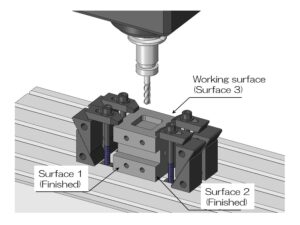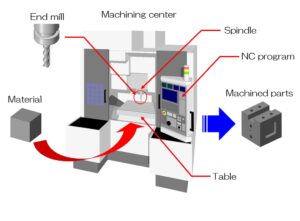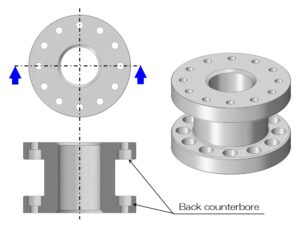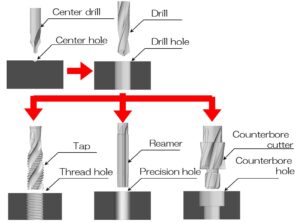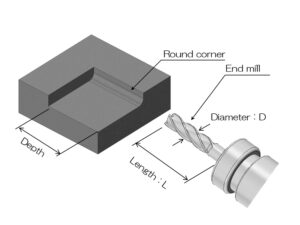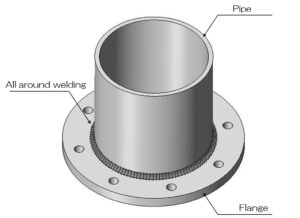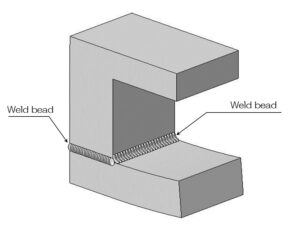009 Milling: Working surface and setup change
We will explain the machining surfaces that are important in cutting and the concept of changeover during machining. Reducing the number of processed surfaces reduces the number of processed surfaces, which leads to cost reductions.
008 Milling: Types and features of milling machines
We will introduce the types and characteristics of cutting machines. Milling-type processing machines can be broadly classified into general-purpose milling cutters, NC milling cutters, and machining centers, but their characteristics and uses also differ.
007 Milling: Seemingly simple but difficult hole machining
Here are some examples of hole machining that are difficult to achieve. There are holes that are difficult to realize due to processing reasons, such as back counterbores, blind holes in undercuts, and deep hole shapes.
005 Milling: Basics of hole machining
We will explain the basic flow of hole drilling and the imperfections of taps and reamers. In particular, it is often forgotten that the pilot hole must be made deeper to ensure the effective length due to imperfections.
004 Milling: Types and characteristics of end mills
We will introduce the types and characteristics of end mills for cutting. It is broadly divided into shape machining and hole machining, and many types and sizes are used for each.
003 Milling: Corner radius and L/D
We will explain the corner radius and L/D constraints specific to cutting. If you imagine the machining process and set the radius and cutting depth, you will get a reasonable design.
002 Welding: Distortion and how to deal with it
We will introduce the tendency of distortion due to welding and how to deal with it. The degree of distortion varies depending on the thinness of the base metal, the depth of weld penetration, the length of the weld leg, etc. Let's design it rationally, keeping in mind how to deal with distortion!
001 Welding: Treatment of weld beads
We will introduce how to treat weld beads. There are various methods of processing weld beads depending on the material and purpose, but they can be broadly divided into only removing burn and bead cutting. In the medical and semiconductor fields, beads are often cut and then buffed.
